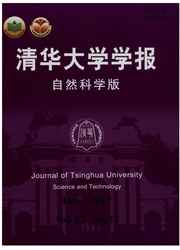

 中文摘要:
中文摘要:
采用变压吸附(PSA)装置提纯含氢流股并回用至加氢过程,可以缓解炼油厂氢气亏缺的现状。该文采用了变压吸附简化模型,构建了提纯回用氢网络模型,以氢公用工程用量为目标函数,建立优化的数学模型,使用商业优化软件GAMS(general algebraic modeling system)平台建模,用DICOPT(discrete and continuous optimizer)作为求解器。案例研究结果表明:变压吸附装置存在最优入口氢气纯度。当吸附和解吸压力比增大、吸附选择性减小时,变压吸附的氢气回收率增大,氢公用工程用量减小。从氢网络优化的角度来说,一味地增加变压吸附装置入口流股氢气纯度以提高回收率的手段并不可取。
 英文摘要:
英文摘要:
Pressure swing adsorption (PSA) is used to purify hydrogen streams with the upgraded streams reused by hydroprocessing units to increase the hydrogen supply in refineries. This study used a PSA shortcut model to construct a hydrogen network design with purification reuse. The mathematical model used the minimum hydrogen utility as the objective function with the commercial optimization software GAMS (general algebraic modeling system) to solve the problem with DICOPT (discrete and continuous optimizer) as the solver. The results of a case study show that the PSA device has the optimal inlet hydrogen purity. As the adsorption and desorption pressure ratio increases and the adsorbent selectivity decreases, the PSA hydrogen recovery increases and the hydrogen utility decreases. The hydrogen network optimization shows that designers should not blindly increase the PSA inlet hydrogen purity to enhance the hydrogen recovery.
 同期刊论文项目
同期刊论文项目
 同项目期刊论文
同项目期刊论文
 Improved ternary diagram approach for the synthesis of a resource conservation network with multiple
Improved ternary diagram approach for the synthesis of a resource conservation network with multiple 期刊信息
期刊信息
